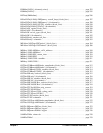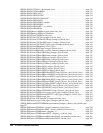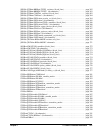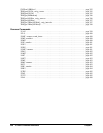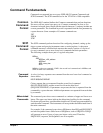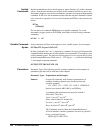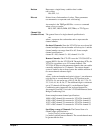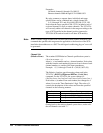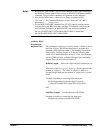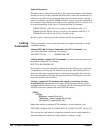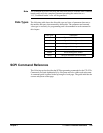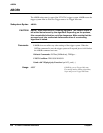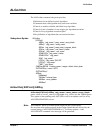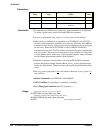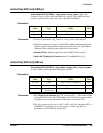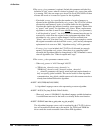
VT1422A Command Reference 233Chapter 7
Notes 1. Because the "card number" digit has been changed to mean Data Destination,
the Relative Channel form is only allowed in the ROUTe:SEQuence:DEFine
command. Usage in other commands will generate an error message.
2. Note that for both forms, a channel list is always contained within
"(@" and ")." The Command Reference always shows the "(@" and ")"
punctuation: (@<ch_list>)
3. For the ROUT:SEQ:DEF command, the VT1422A has to transfer remote
channels lists to the RSC units they reference. This transfer will be much
more efficient if channels for particular RSCs are grouped together in
the list. (@10025,10031,10120,10820,10810,10903) is better than
(@10810,10025,10903,10031,10820,10903).
Arbitrary Block
Program and
Response Data This parameter or data type is used to transfer a block of data in
the form of bytes. The block of data bytes is preceded by a
preamble which indicates either: 1) the number of data bytes
which follow (definite length) or 2) that the following data
block will be terminated upon receipt of a New Line message
and for GPIB operation, with the EOI signal true (indefinite
length). The syntax for this parameter is:
Definite Length; #<non-zero digit><digit(s)><data byte(s)>
Where the value of <non-zero digit> is 1-9 and represents the
number of <digit(s)>. The value of <digit(s)> taken as a
decimal integer indicates the number of <data byte(s)> in the
block.
Example of sending or receiving 1024 data bytes:
#41024<byte><byte1><byte2><byte3><byte4>…
…<byte1021><byte1022><byte1023><byte1024>
OR
Indefinite Length; #0<data byte(s)><NL^END>
Example of sending or receiving four data bytes:
#0<byte><byte><byte><byte><NL^END>



